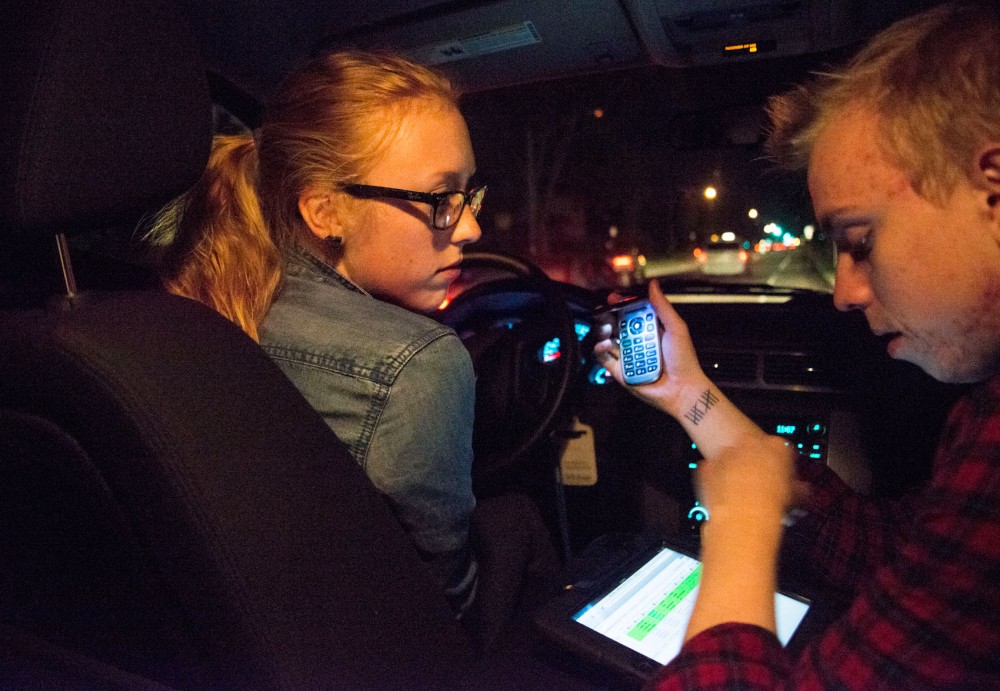Zinue Cisneros said he used the University of Minnesota’s free Gopher Chauffeur service nearly every weekend as a freshman to get back to Bailey Hall in St. Paul.
The actuarial mathematics and computer science sophomore said he would wait “a very long time” to get picked up — sometimes as long as two hours.
To cut down on wait times, the Gopher Chauffeur is adding an extra vehicle to its fleet beginning this school year. With more drivers out picking up students, employees said the new arrangement should better serve growing student demand.
“We will be much more efficient,” said Julie Sanem, the Gopher Chauffeur’s advisor and director of health promotion for Boynton Health Service.
The Minnesota Student Association established the Gopher Chauffeur program in 2007 to give students a safe, free transportation option on the weekends, Sanem said. Students can call in between 10 p.m. and 2 a.m. Friday and Saturday to get picked up.
The program leases vehicles through the University, Sanem said. Currently, drivers use two 12-person vans and a Chevrolet Tahoe SUV, offering 26 total seats for riders.
But the leasing service is discontinuing the vans, she said, so they’ll be replaced with three seven-person minivans by late September or early October. Combined with the SUV, that change will lower the total number of seats to 21.
Psychology sophomore Alex Urshan said the new situation seemed odd because of the lower number of seats.
“It’s kind of a weird trade-off,” she said, adding that more cars still seemed like a good idea since the Chauffeur gets backed up with requests.
As long as she has a warm place to wait, though, Urshan said the wait times don’t bother her very much.
“I’m just glad we have it,” she said.
The Gopher Chauffeur rarely gets pick-up requests from large groups, Sanem said, so fewer of seats shouldn’t be a
problem.
The Student Services Fee Committee funded the fourth vehicle last spring semester. The program was granted a budget of about $87,500 for the 2013-14 academic year — an increase of about $27,500 from the year before.
Through the fee, each student will pay $1.22 for the Chauffeur each semester this year.
‘Dramatic’ growth in demand
The Chauffeur has given rides to an increasing number of students each year since Boynton began keeping track.
For 2008-09, the Chauffeur gave 6,400 rides, according to Boynton records. Last academic year, the number was just less than 11,000.
Sanem attributes the growth in ridership to a greater student awareness of the program.
For example, many crime alerts sent to all students at the University recommend that they take the Gopher Chauffeur home for added safety, she said.
“It seems like every year more people learn about it,” student driver and psychology senior Tim Garay said.
And student interest in the Chauffeur is still increasing.
During the first three weekends of 2013-14, the Chauffeur has serviced about 150 more riders than duting the same weekends last year, according to Boynton records.
Even with the extra minivan, Sanem said it’ll be tough to serve all interested students.
“I’m not sure that we will ever fully meet demand,” she said.
Student-driven
The Gopher Chauffeur is staffed by student employees.
Students drive the vans, answer phone calls from customers and help drivers with navigation. Linguistics senior Henry Wahl, a Gopher Chauffeur employee, said he usually answers calls at dispatch.
When he tells other people about his job, Wahl said they often express sympathy because he sometimes works with intoxicated customers.
Although employees have to deal with drunk students, Wahl said most of the students he works with are friendly.
“They’re almost always really appreciative,” he said. “It’s really fun.”
One of the more difficult duties of a dispatch worker is estimating how long to tell students they’ll have to wait to be picked up, Wahl said.
“It’s really hard to tell,” he said. “We literally are totally guessing.”
Sanem said student employees go through a driving record check, first-aid training and CPR certification, but there’s no driving test for employees.
The new minivans will likely offer safer, smoother drives and better gas mileage, Wahl said.
“They won’t look like creeper vans,” he said.








